On 14 November 1940, Coventry suffered one of the worst bombing raids of the Second World War. Destroying much of the city, one of the victims was the old cathedral, built in the 14th century. And — although a new, modernist version was erected completed in 1962 — the old church’s ruins remained adjacent to it — a bombed-out monument to the destructions of the war.
To mark the opening of the new cathedral, composer Benjamin Britten wrote War Requiem. A piece that set the poetry of Wilfred Owen, and the Latin mass for the dead, to music, like the ruined old cathedral, War Requiem was intended as another monument to war’s destruction. But War Requiem is also a force of reconciliation — the original production featured an Englishman, a German, and Russian in the lead roles.
This year, the piece is being restaged by the English National Opera this year to mark the 100th anniversary of the end of the First World War. In a groundbreaking move, the ENO have called on photographer Wolfgang Tillmans to provide the artistic direction and production for the performance, and Wolfgang in turn has called on Nasir Mazhar to provide the costume for the 120 strong chorus of voices.
With the aim of exploring War Requiem’s “ongoing relevance” they developed costumes “not fixed in a specific time period of the last hundred years,” as Wolfgang explains. The backdrop is provided by “three movable, eight metre tall LED walls, and a twenty metre wide back projection screen, all specifically designed for this production”. Across this backdrop Wolfgang’s pictures flash, abstracted colour works, landscapes and skyscapes, images of the ruined cathedral and an appeal for justice for Srebrenica and pages from Ernst Friedrich’s War Against War universalise and emotionalise the work into something that references all conflicts in its moods.
In an exclusive piece, following the piece’s premiere on Friday, Wolfgang shares images of the production with us, and sits down with Nasir to discuss the creative genesis of their work on War Requiem…
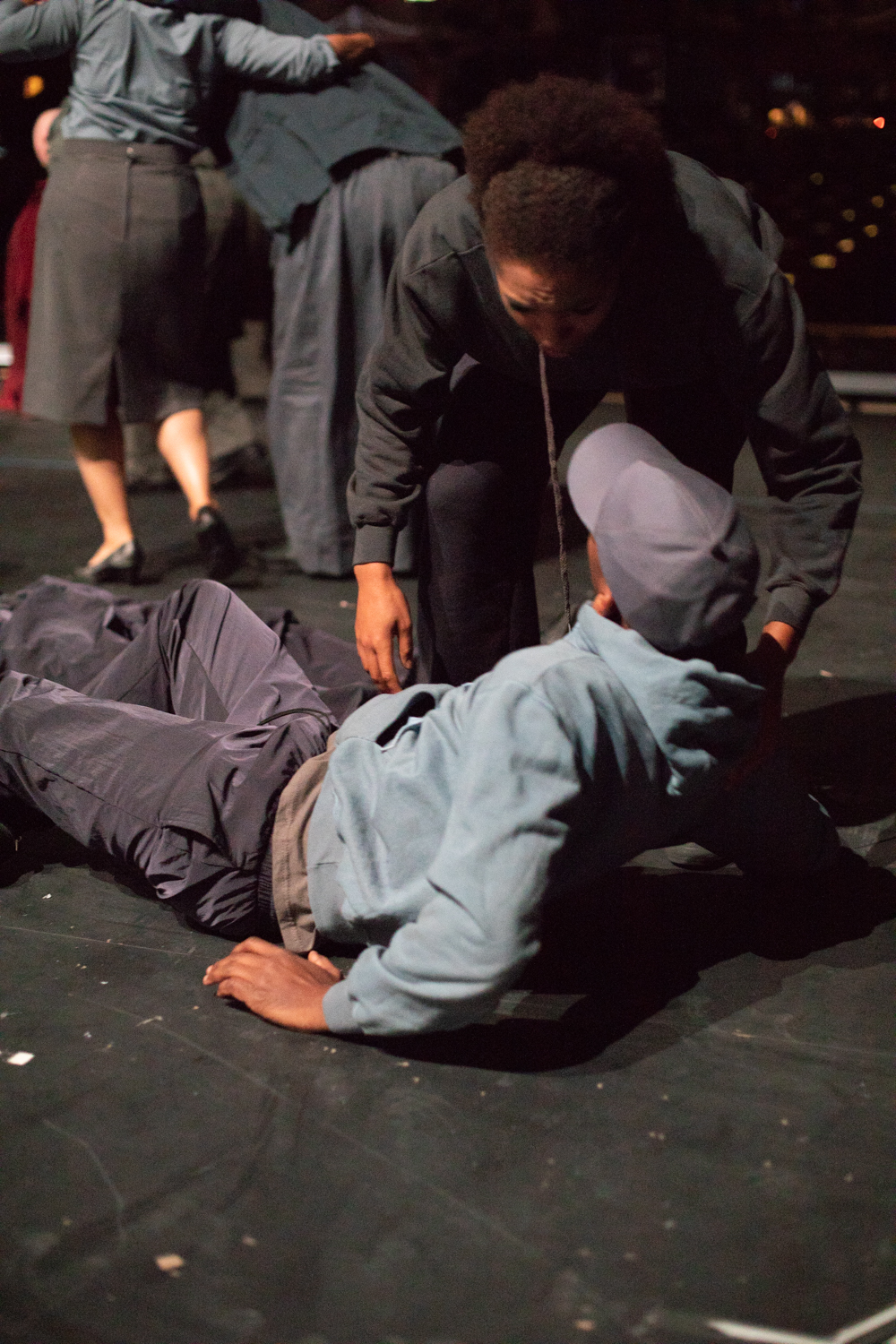
Wolfgang: When I was offered the job of designing this production of Benjamin Britten’s War Requiem at the ENO, I asked Daniel Kramer — the artistic director of the ENO — what it would actually entail. He said, basically everything you see on stage, including the costumes. Which was exciting for me, because the costumes are such a big part of the production, but I knew, of course, I couldn’t and wouldn’t be able to work on designing these myself. I was also not interested in using period uniforms. I wanted to keep it abstract and not tie it to a particular time, while also keeping it contemporary and with a design signature. I thought of you. Maybe it is not the most obvious choice? But I was confident it would totally work out. What did you think? Did you feel it was outside what you normally do?
Nasir: I actually started off working in theatre at the beginning, you know? So I have an understanding of it. When I started out I was assisting Mark Wheeler, making theatrical headwear. You didn’t know that?
I know now — but I didn’t when I first asked you.
The first thing we did together was for Kylie Minogue Showgirl tour, and then on the film Elizabeth with Cate Blanchett. We worked with Rambert and Michael Clarke, we did loads and loads of opera and theatre.
How did it start?
I think James Jeannette introduced us? At that point I was hairdressing on Brick Lane. I didn’t know what I wanted to do — I was doing a hat making course at Chelsea, and practicing making things myself and then I ended up meeting Mark.
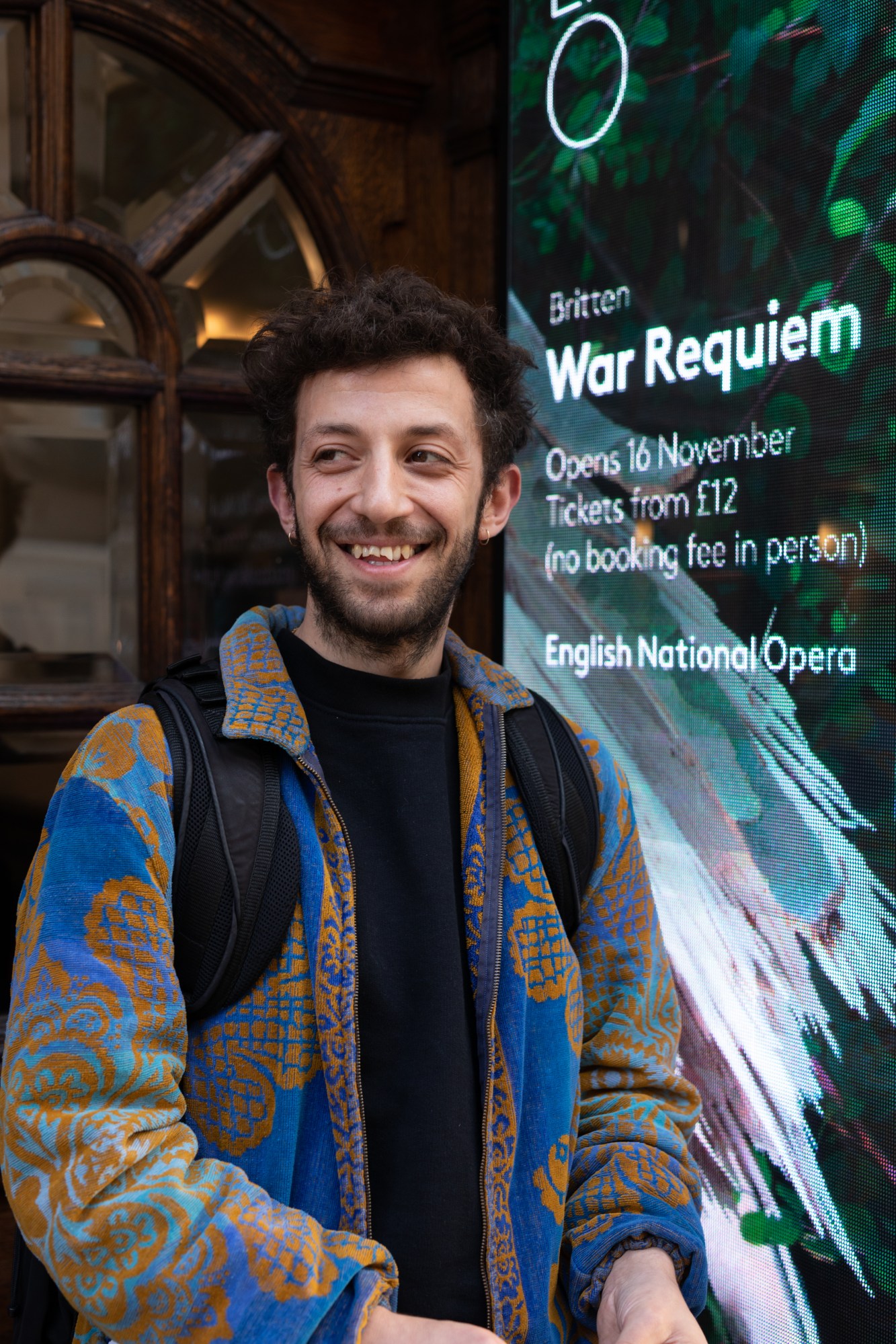
It’s interesting there’s a theatrical past to you, you know the process.
Yeah, a little bit, but I’ve never worked on this scale — from idea to development to making to the stage. The actual thinking about the part that clothing can play in the character was there.
You came up with this incredible range of garments — there’s about eighty designs all together, I think. It ranges from an apron that could’ve been worn by a blacksmith 100 years ago to boiler suits that Spitfire pilots could have worn to hoodies and caps that could be worn today — I’m glad you put a few of your signature caps in there.
I wanted the costume to touch on these iconic figures within war, like nurses and pilots, but also to represent everyone, everyday people. It was actually really difficult to express all these ideas through costume, because it’s so ambiguous. In some ways there was a direction, and I knew where it had to go, but I didn’t quite know how to get there –– I don’t want to say I was blindly guessing where to go, but almost. And it’s hard to describe what was so tricky about it, because it’s not like there were barriers or restrictions upon what I could do.

The final designs show incredible strength and rigour in holding back without being dull. When I saw the stage for the first time filled with 120 bodies all in costume, it was incredibly alive. You showed us some designs before you met the chorus I believe, and they came from your imagination, and then you fitted it to the character? Is that right?
Yes, and we’ve personalised each costume as much as possible, and each performer brings out each character differently, depending on their stature or how they move. Everyone tells their own story through how they wear their costume. It was all about adding and taking away from each individual. We had almost a month of fittings, solidly, everyday.
And then you did the costumes for the soloists and the principles last?
That was the very last bit and it was quite nerve racking! We had so many months to work on everything and then it could have all gone wrong at the end when we were working on those costumes.
How did you find the experience of the rehearsals? This quite small room, with 120 people all belting out, singing, and the health and safety person handing out earbuds.
It was actually really emotional, it was so in your face. It made me want cry. It took my breath away.
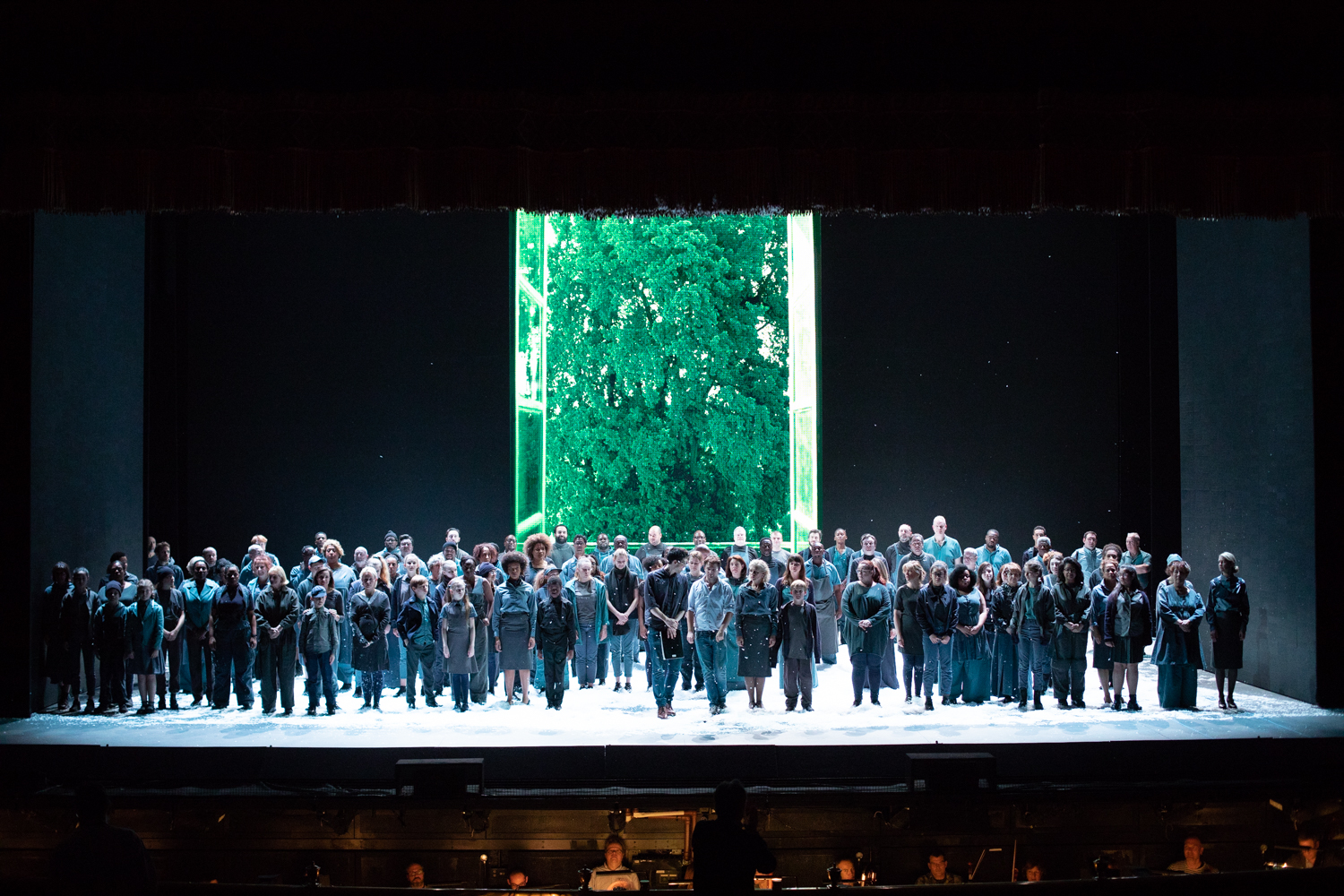
It was super touching.
What do you feel it is, about opera, that’s so important? It’s not the acting, but there’s something in the energy of it and the way it’s put across, it’s so different from both theatre and music, you don’t get that emotion.
The technical requirement of having no amplification and having to fill an entire theatre with such a powerful sound. Opera worked 200 years ago just like it works today. You have to bring across fine emotional nuances using just your voice, in a way that can still be heard in the back of the room. And I think this made it hard for me to like it in the past. I found the over-accentuated voices too much, simply. These last few weeks have really opened it up to me. The tonal range of their voices is almost unnatural.
This feels different to more classic operas… I’m not sure I know enough about opera to say what the difference is. It’s almost songs rather than a continuous opera.
And I think that’s because it was never written as opera in that way. It was written as a mass — to be first performed at the opening of Coventry Cathedral in 1962, in a religious service.
It makes it sounds very different.
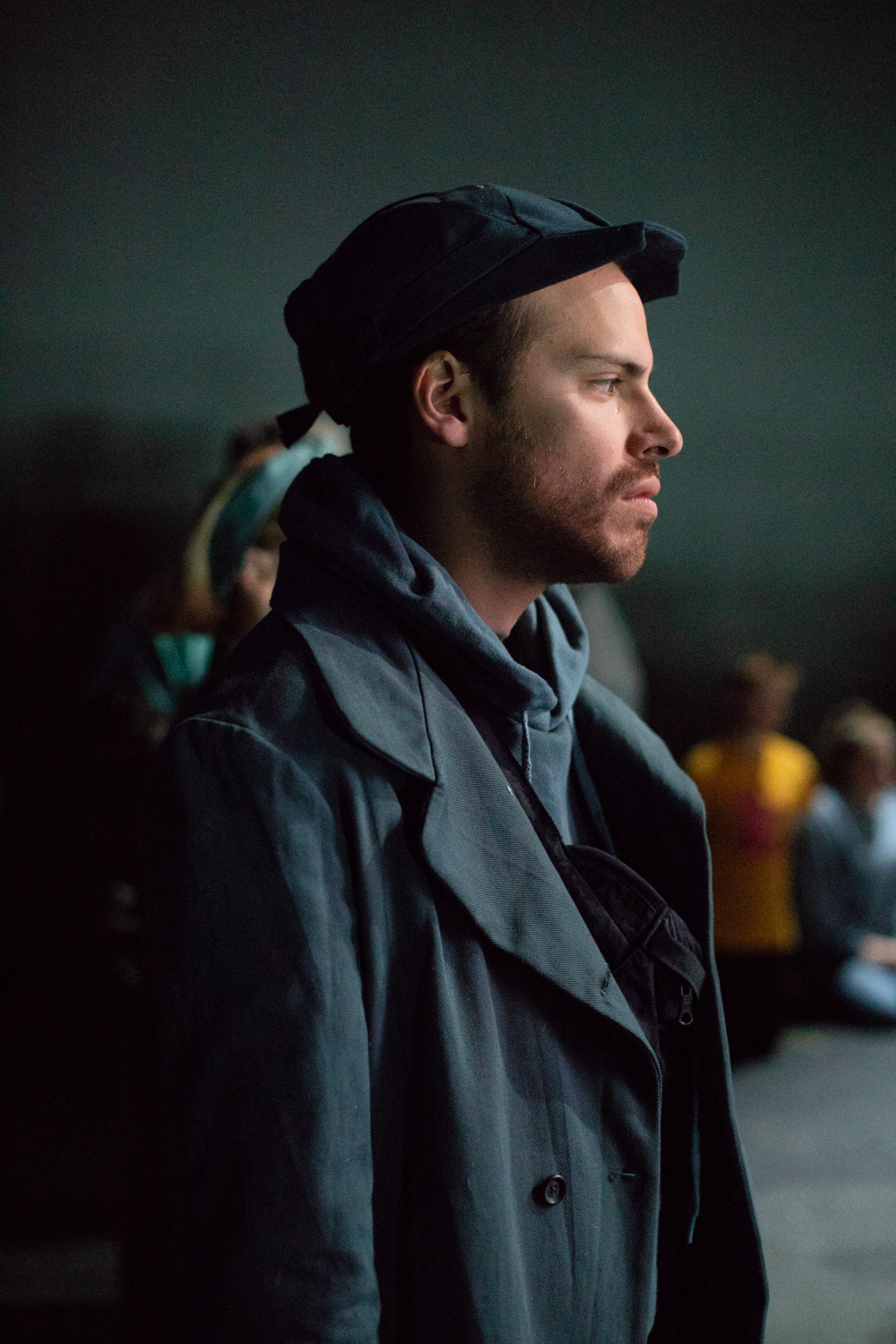
The ENO does everything from avant-garde to the classics, it’s really great. What was it like working with their in-house costume department?
It was a dream, to be honest. They were incredible. It was like working for a fashion house in the way they turned what I envisaged into reality,
And they accepted you as the last word?
There was nothing I wanted to do that I couldn’t do. They made the process seamless.
I also found the process really impressive actually. How they worked really calmly through everything, even though there was no room for error or delay. They know they have this amount of time for this specific thing, the schedule is really tight, really accounted for. They knew what they were doing. You had to be ready though, ready to make a judgement, there’s no room to second guess yourself.
I found that really hard actually! I usually work slowly, they were like ‘no! decide now!’.
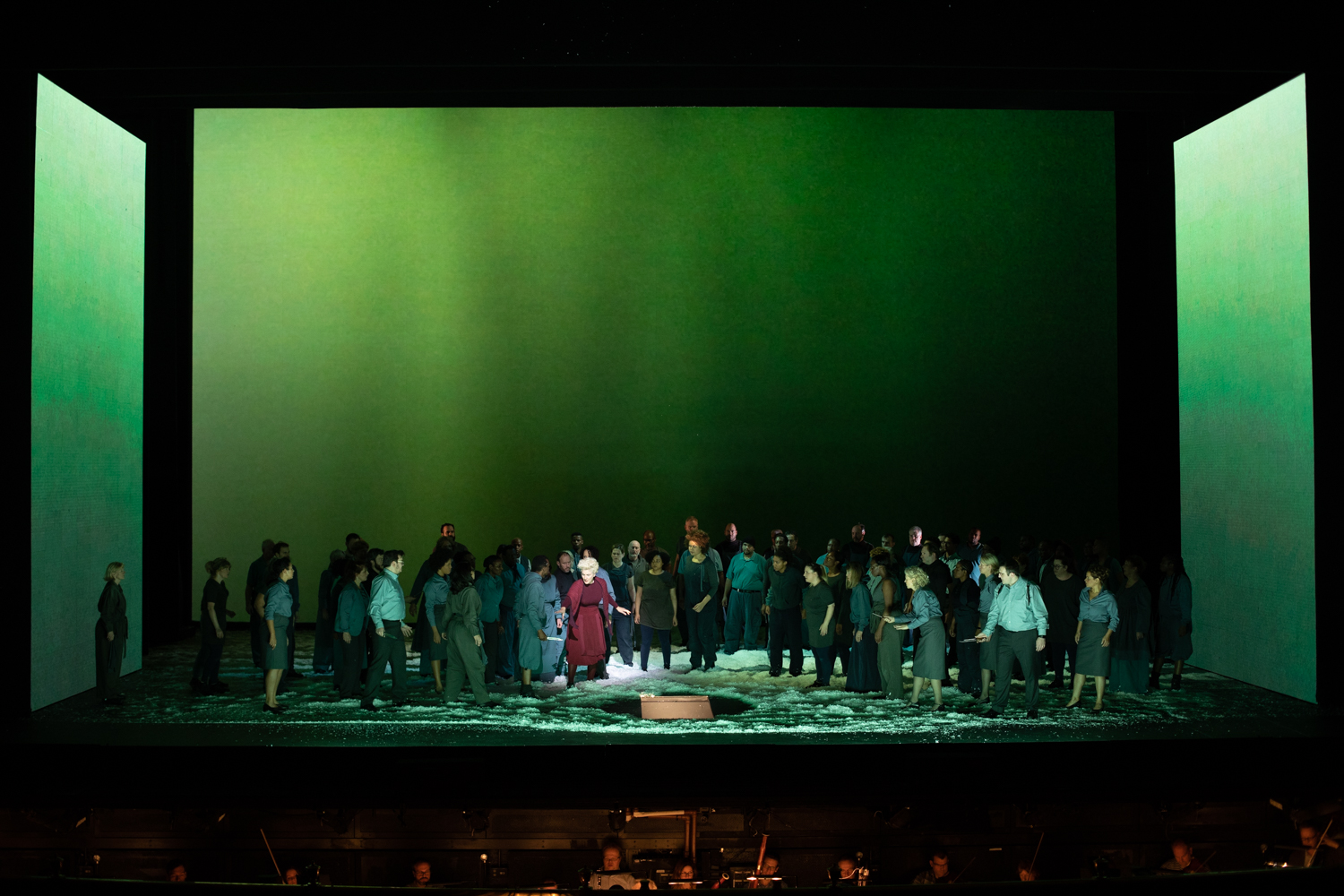
With great care and detail its prepared for you to decide, but you have to decide, and move on to next thing. I think it’s been a huge learning curve for both of us.
Dealing with that mass of costumes and people is so intense, and crew as well, but it’s so magical, theatre has that magic — more than cinema. What did you want people to feel when they’re watching this production? Do you think it has a specific point to make?
Well, firstly this production is to tie in with the centenary of the end of the First World War, but I wanted it to feel as alive and is as relevant to right now as it was when Britten first wrote War Requiem in 1962, using the poems of Wilfred Owen. I didn’t want to put any words in Britten’s mouth, I didn’t want any overly specific gestures or storylines in the design.
I wanted to find a middle ground between then and now. I went to Coventry Cathedral, where War Requiem was first performed, and used its ruin as a visual source for new photographs and film sequences. I also brought in this book called War Against War by Ernst Friedrich, a pacifist who published this book in 1927 in four languages — Dutch, German, English, French. On one page it shows the fantasy of war and on the other the reality — what war really looks like. The images are from the First World War, but these are still problems today.
And I wanted there to be room for the music, for it not to be coupled with direct narrative in the visuals. There’s three times where I use the projection and LED walls as just light sources and for abstract films I made, which are flickering in the lights.
I love the green film, it’s really eerie actually.
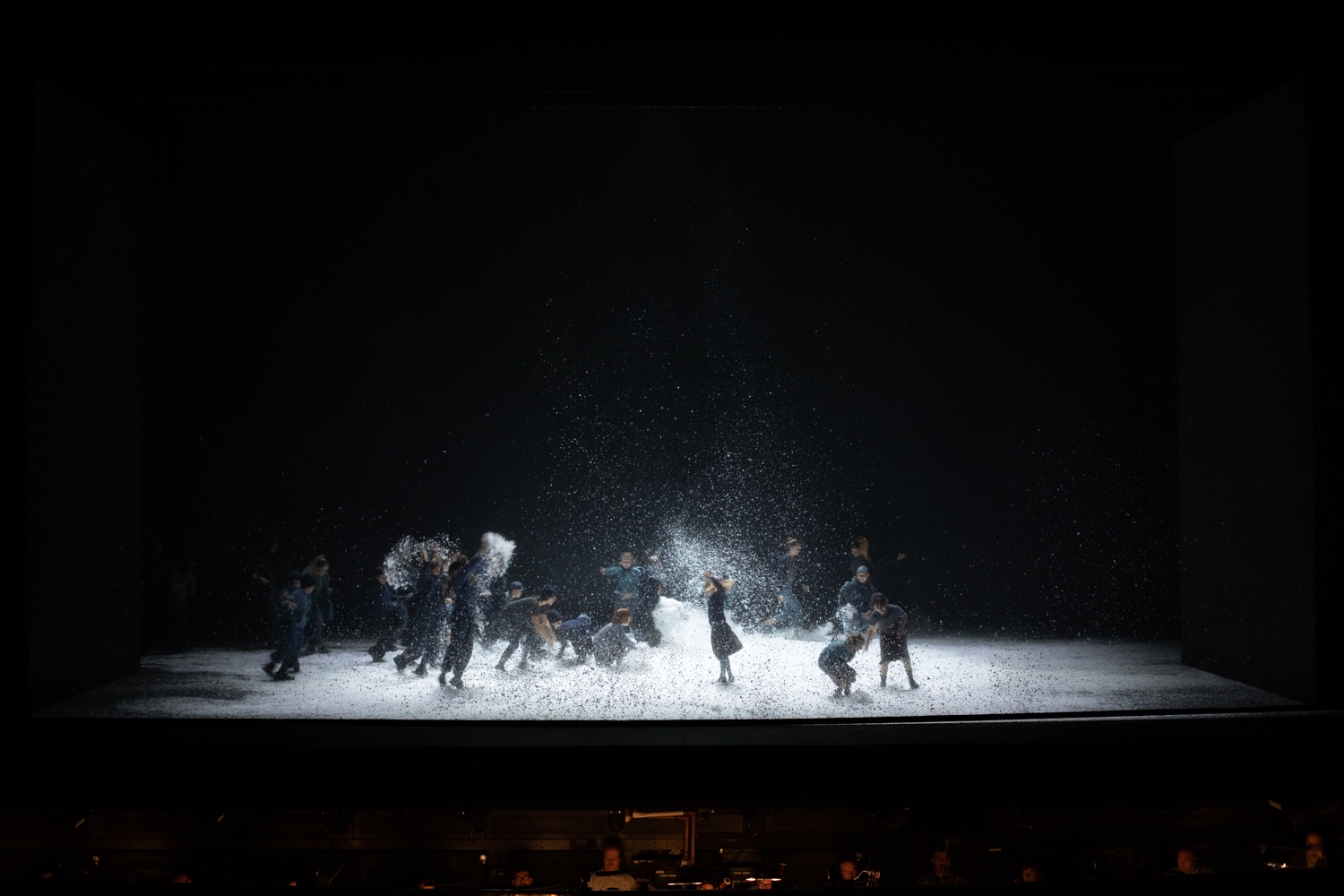
It’s one I made in Daniel’s office when we were listening back to the music.
I was there?
I was filming on my phone. It was filming directly under the influence of the music, in that moment. It wasn’t fake, it was a direct reaction to the music. I felt this was not affected, it was genuine. The abstract visual leaves room to respond to the music and lyrics. I started by underlining a lot of the lyrics that I felt spoke to me, and I initially wanted to use the words as visuals, trying to stay close to what the author has given us. There was this Prince video, for a song called Time, made in the late 80s, that was revolutionary at the time because it was just words disappearing and appearing.
So you’re saying Prince was an influence for this?
[Laughing] Yes, we can say Prince was an influence for this! Except that I ended up pulling out so many lines because it seemed so overstated. In the end I just kept one line in — “And half the seed of Europe, one by one” — and this photograph of the line — “Father Forgive” — which was chiselled in the nave of the ruin of Coventry Cathedral after it was bombed in the Second World War. It was a process, something remains from the very beginning, but it was… I learned really that it was really about what you chose not to show, what you chose to take out, what you can do, what you chose not to do.
It’s about what you can imply, what you don’t need to say. The message is still there. I felt like, in the nurses outfits, for example, I couldn’t make up my mind about how many nurses outfits we needed. One, in the end, was enough to signify everyone, to get that message across. To have more takes away her importance in a way. It’s not about shoving it down the audience’s throat. There’s so many messages, you need to leave space for each to be seen without forcing it too much. Less is more.
That’s what makes it — when you look at the totality of people on stage in your costumes it’s so visually sensational. There are all these individual, fully formed, characters, and together they don’t symbolise just nurses or pilots–– you get a sense that this is a population. The costumes make it universal.
But also, I’d say, ambiguous. It’s not about one specific population.
To be so open, yet so specific that you can pick out these individual characters, it’s amazing that you achieved that.
I hope so!

War Requiem is at English National Opera until 7 December.
